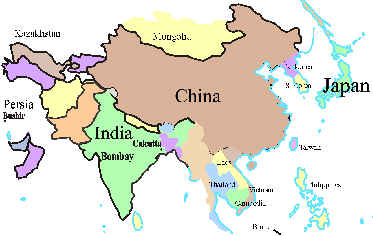 |
 |
 |
 |
 |
 |
 |
 |
 |
 |
 |
 |
 |
 |
 |
 |
 |
|
|
|
|
|
|
|
|
|
|
|
|
|
|
|
|
|
|
|
|
|
|
|
|
|
|
|
|
|
 |
|
|
|
|
|
|
|
Part II of extracts from a lecture given by the Hakham, Rabbi Ya'aqob Menashe, hy"w.
The Hakham is a great-great grandson of Sir Albert ('Abdallah)
|
|
|
|
|
|
|
|
|
|
|
|
|
|
 awid Sasson (his name was Dawid Sasson, but in English he would be referred to as David Sassoon) arrived in Bombay in 1833 and passed away a little over 30 years later in 1864. In that time David Sassoon & Co. (Dawid Sasson Wehaberaw) made its mark on vast areas of the globe, as we shall see. awid Sasson (his name was Dawid Sasson, but in English he would be referred to as David Sassoon) arrived in Bombay in 1833 and passed away a little over 30 years later in 1864. In that time David Sassoon & Co. (Dawid Sasson Wehaberaw) made its mark on vast areas of the globe, as we shall see.
Dawid Sasson's mother tongue was 'Amrani (the Jewish Arabic dialect which was the language he spoke at home). He also spoke Hebrew, Persian and Turkish. Living in India, he also had to learn Hindustani. Surprisingly, perhaps, in view of the connection with the British, he never learned English. This detail did not prevent him from becoming a naturalized British citizen in 1853.
His sons, however, spoke all the languages, including English. It should be noted that, despite all these changes in their lifestyle and surroundings, David Sassoon insisted on retaining the style of dress and customs of the Baghdadian Jews for himself and his family. And on the top of his list of priorities was his religion. He refused to let the changes in his life impact his family's devotion to Judaism. From the outset, they set aside a room for Tefillah
|
|
|
|
|
|
|
|
|
|
|
|
|
|
|
|
|
(prayers) in all their offices, and it did not take long for them to have a minyan from their employees.
Dawid Sasson rarely tested uncharted waters. He preferred to watch others and learn from their mistakes, before attempting any new business. Even then, he would proceed with caution.
He started in Bombay with a counting house and a small carpet godown. His business flair and acumen soon made him one of the richest men in Bombay. His main competition there were the Parsis. However, he would soon surpass them in many areas. It would not be long before he was involved in the cotton trade between several countries, including India, England and China. In due course, exporting opium to China would become a major arm of their business.
It warrants mentioning that opium was a totally legal commodity in those days, and
|
|
|
|
|
|
|
|
|
|
|
|
|
|
exporting it would have been considered no different from exporting tea and coffee today. Trade in opium was introduced by Arab traders and, subsequently, it came under the monopoly of the (British) East India Company. When their monopoly ceased, all others were free to trade in all commodoties, including opium. It is important to reiterate this, as in recent years some groups have been deliberately misusing this to further their anti-Semitic agenda.
In 1844, Dawid Sasson's second son Eliyahu Dawid Sasson (or Elias, as he was also known) was sent to Shanghai where a branch was opened and then to Hong Kong. By 1850, Eliyahu Dawid (Elias) was permanently based in Shanghai and became heavily involved in the importation of cotton, opium and other commodities. Within only a few years they had a solid footing along the entire China coast and not long thereafter would open up in Japan.
A short note is in order here, to explain the use of the names. The traditional way of naming a son is to add the father's name to the son's. Thus Eliyahu, the son of Dawid Sasson, would be known as Eliyahu Dawid Sasson. In addition, the father is always referred to
|
|
|
|
|
|
|
|
|
|
|
|
|
|
|
|
|
|
|
|
|
|
Keep our heritage and traditions alive!
Become a Midrash BEN ISH HAI sponsor today!
|
|
|
|
|
|
|
|
|
|
|
|
|
|
|
The Newsletter of Midrash BEN ISH HAI ™ -- Where Our Heritage Lives™ www.midrash.org
|
|
|
|
|
|
|
|
|
|
|
|
|

